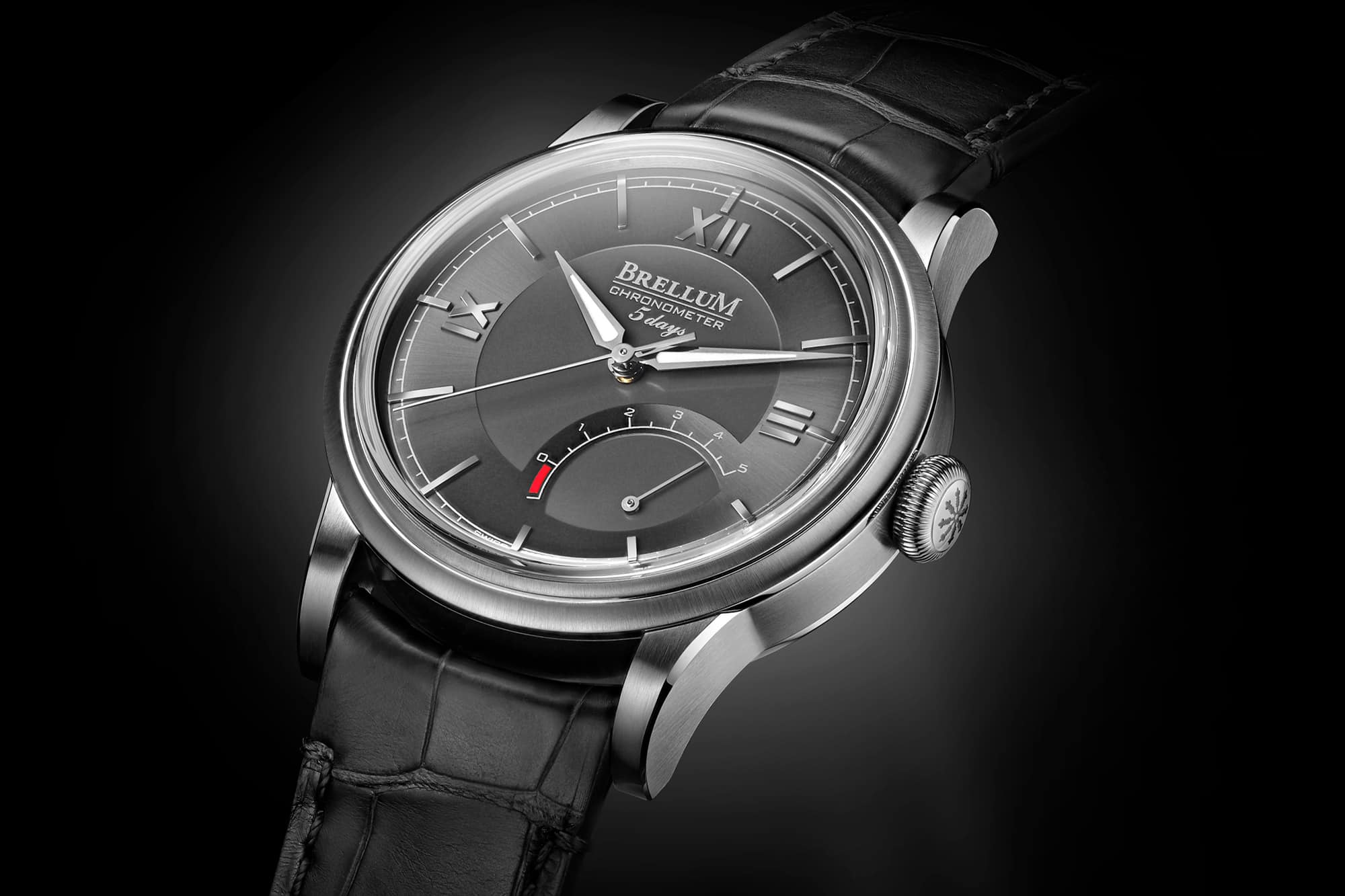Brellum is an independent brand with fourth-generation Swiss watchmaker, Sebastien Muller, at the helm. Known for impressive design and build quality with mellow pricing, Brellum has just announced their Wyvern Manufacture LE.1 and .2, of which only 23 units will be sold of each. The LE.1 features a domed anthracite dial with steel markers and hands, the movement dressed up in steel and blued screws. The LE.2 builds a two-tone colorway onto a white opalin dial, with its movement’s main bridge coated in rose gold with steel screws and its balance wheel bridge coated in a matte opaline. Both watches will sell for 3,990 CHF (just under $4,000).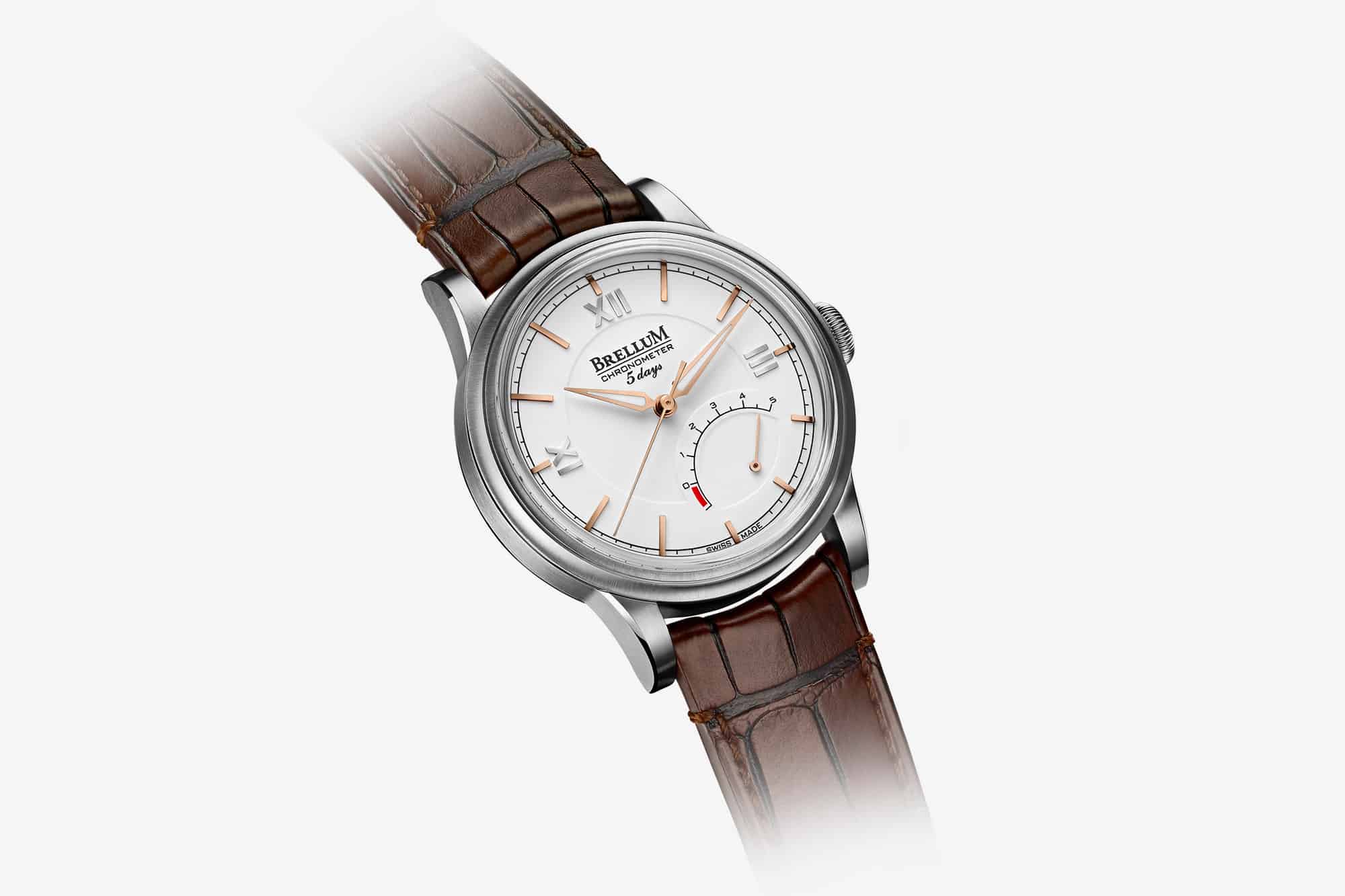 At 42.5 millimeters across and 13 millimeters thick, this watch is on the large side for a dress watch, though these dimensions are not uncommonly big. It’s not the most unique looking watch at a quick glance, but the details tell another story. The rotated roman numerals at the nine and three o’clock positions, the lack of a date window, and the power reserve indicator mounted at five o’clock make for a classy set of quirks on the dial side.
At 42.5 millimeters across and 13 millimeters thick, this watch is on the large side for a dress watch, though these dimensions are not uncommonly big. It’s not the most unique looking watch at a quick glance, but the details tell another story. The rotated roman numerals at the nine and three o’clock positions, the lack of a date window, and the power reserve indicator mounted at five o’clock make for a classy set of quirks on the dial side.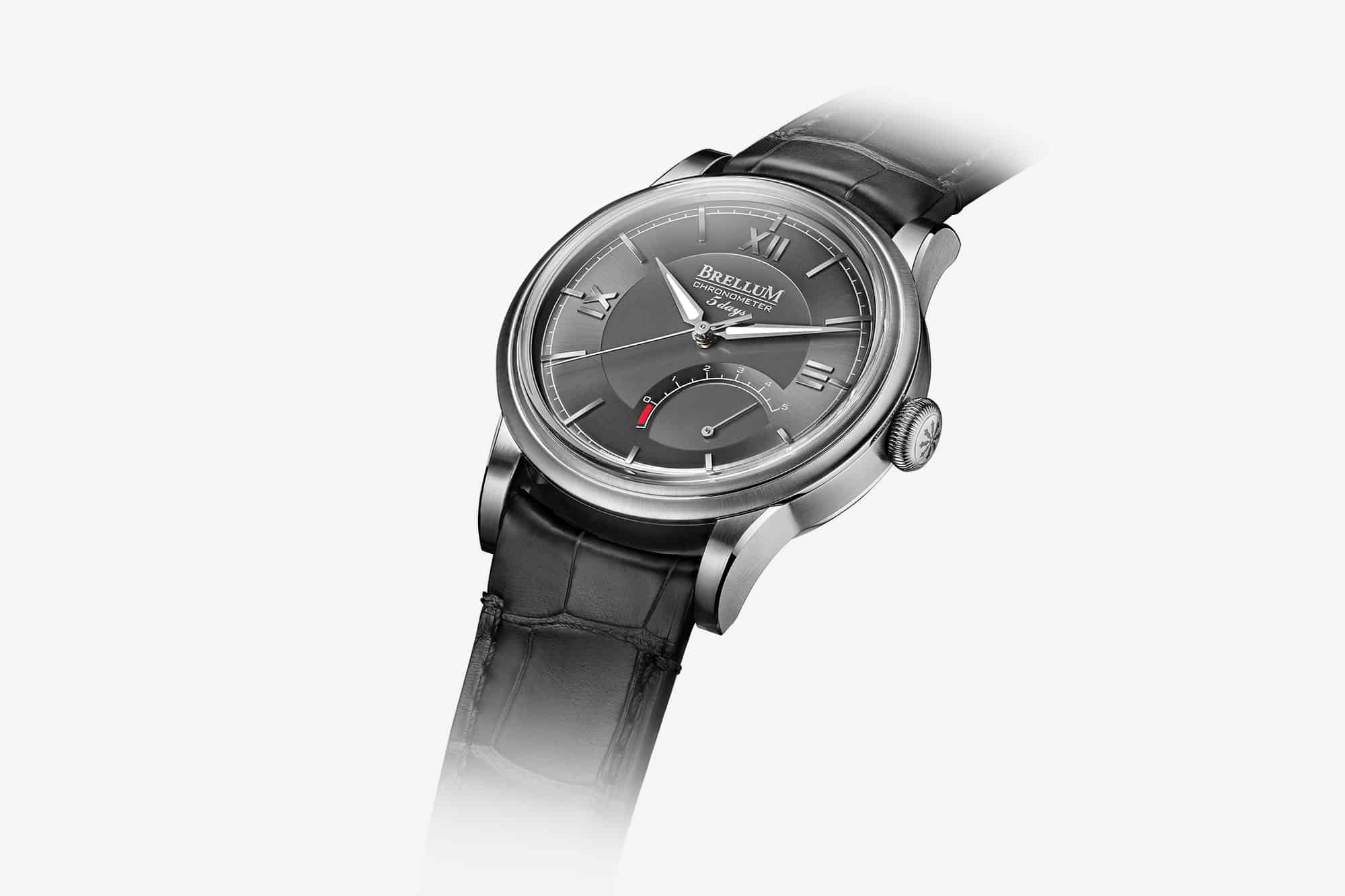
Introducing the Brellum Wyvern Manufacture LE.1 and LE.2
The plot thickens around back. The movement employs a double-barrel mainspring mechanism that provides over five days of power reserve. Dubbed the BR-18 and boldly referred to as a “manufacture,” it’s important to clarify that this is not, in fact, an in-house movement. The BR-18 is, rather, a modified Technotime hand wound movement. The main technical modification is a custom hairspring and escapement rebuild that enabled Brellum to achieve COSC certification (+6/-4 seconds/day). While COSC watches like the Formex Essence are breaking record low price barriers lately, $4,000 for a COSC watch with this level of sophistication, mechanical tweaking, and finish is a very reasonable ask—especially once you start looking for similar features from other brands.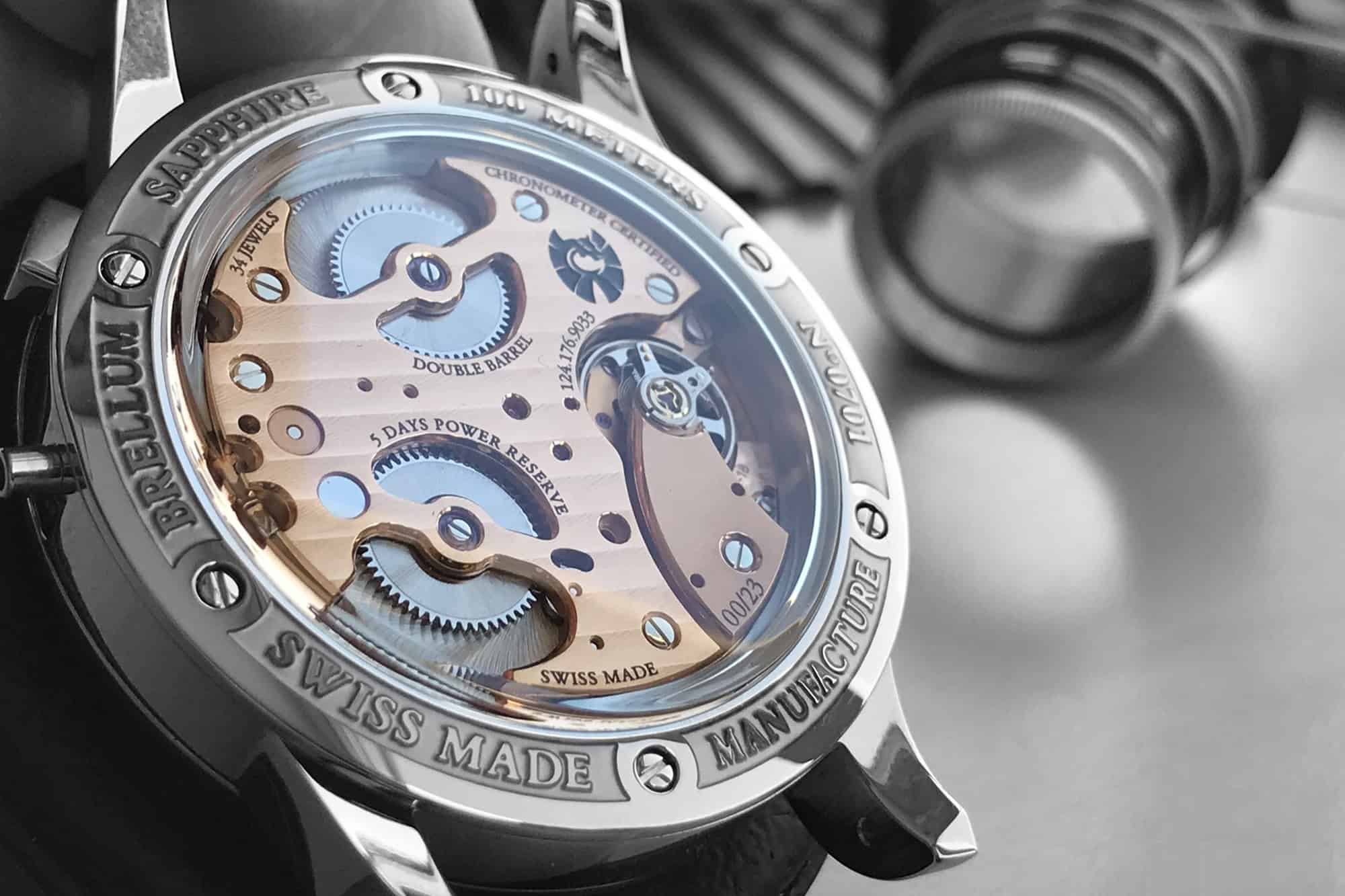
Perhaps more compelling than its accuracy and robust power reserve is the Cal. BR-18’s finishing. Both the steel LE.1 and the gold-plated LE.2 movements are eye-catching, and each repeats the colorway from their respective dials. Horizontal Geneva stripes on the main bridge formalize the look, while the screws and rubies provide pops of color. I am especially fond of the matte opalin balance wheel bridge on the LE.2, which creates a nice conversation with the brighter rose gold main bridge. The dual barrels are plain to the eye through the skeletonized plate; this is the sort of view which I’ve found makes for heightened personal enjoyment of the technology and more compelling cocktail-party explanations. The lack of an obstructive auto-winding rotor makes the story that much easier to tell.
The screwed-on caseback features a sapphire crystal, while the engraving around the frame is rendered in relief; this monumental engraving style commands a sense of power and permanence that’s fitting to the watch’s fourth-generation heritage as well as its large size. The way the caseback’s six screws divide the text into perfectly proportioned segments is a testament to the maturity of this design.
I’ve said before that—for better or worse—reading robust specs like “5 Days Power Reserve” and “Chronometer Certified” elevates my appreciation of a watch’s movement and, thus, the watch itself. While these aren’t quite mind-blowing specs, it is rare to find them on watches at this price-point, and the Wyvern comes off as expensive. That might seem like a shallow-minded criteria, yet there is no question that this watch is reaching toward an aesthetic and a functional category that’s typically going to cost much more. That heightened value is, I’d argue, one of the more appealing aspects of the Wyvern specifically and of Brellum more generally.
The Wyvern raises interesting questions about how we think of labels like “in-house” and “manufacture” and “hand-made.” Muller explained to us that his modifications to the movement boil down to aesthetic changes like the finishing and the skeletonization of the main bridge, and, mechanically, to a complete overhaul of the escapement, which Muller built from his original technical drawings in order to achieve COSC-level accuracy. No, Muller didn’t build this movement from scratch, so “in-house” isn’t an accurate label, but perhaps “manufacture”—which Brellum uses liberally when referring to the Wyvern—is. Wherever you may land on that often hotly debated semantic question, the Wyvern proves once again that small, nimble watch houses can capitalize on their specific expertise to offer outstanding value. Brellum
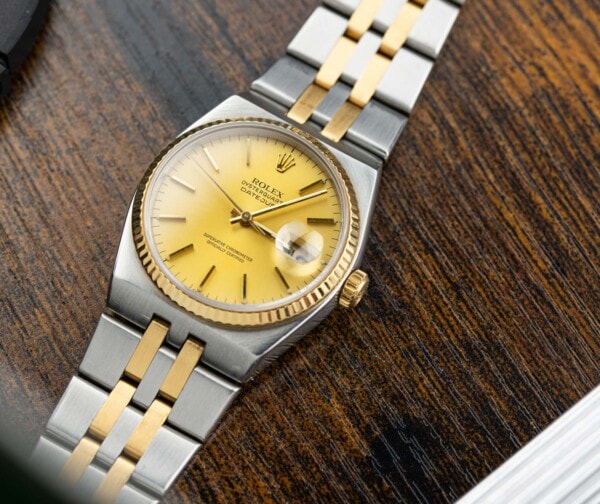








 Featured Videos
Featured Videos




